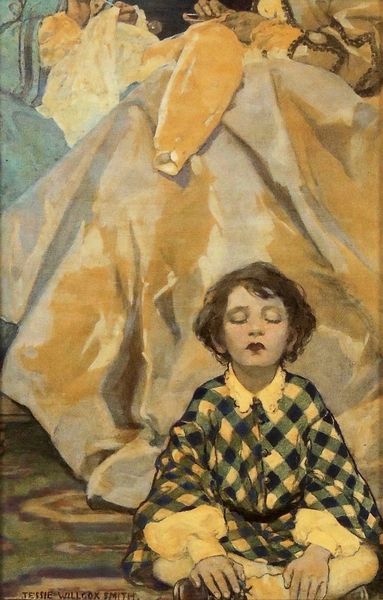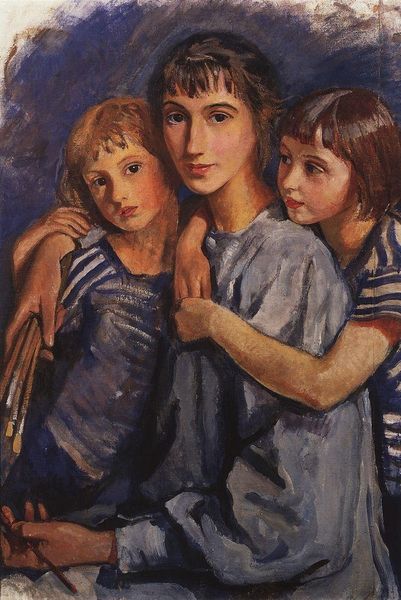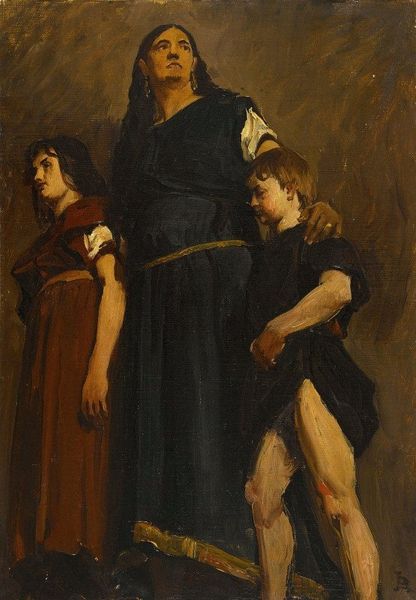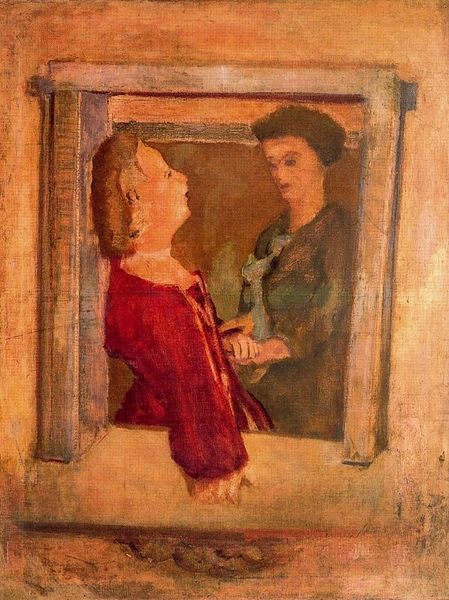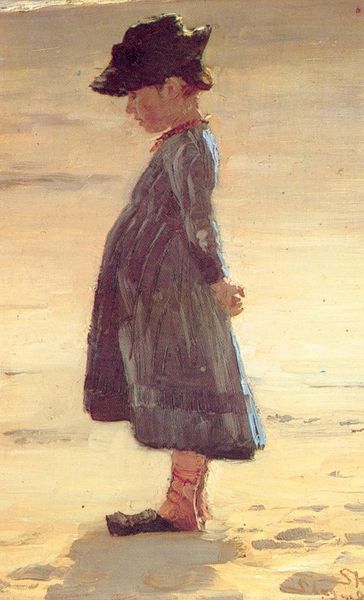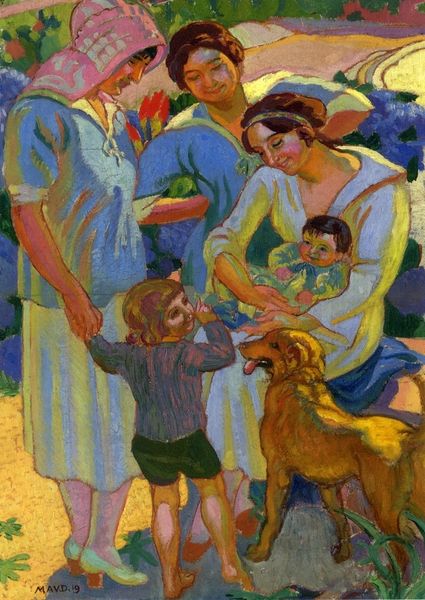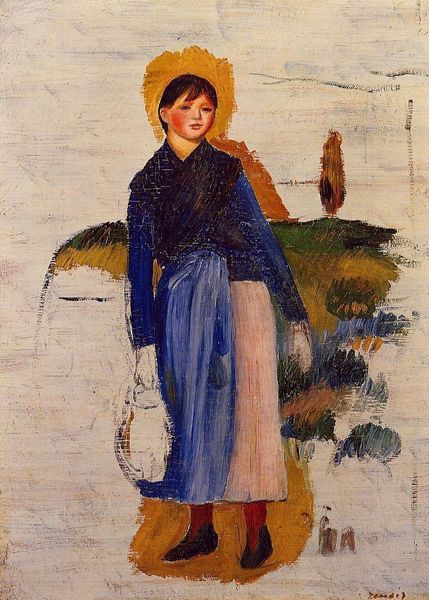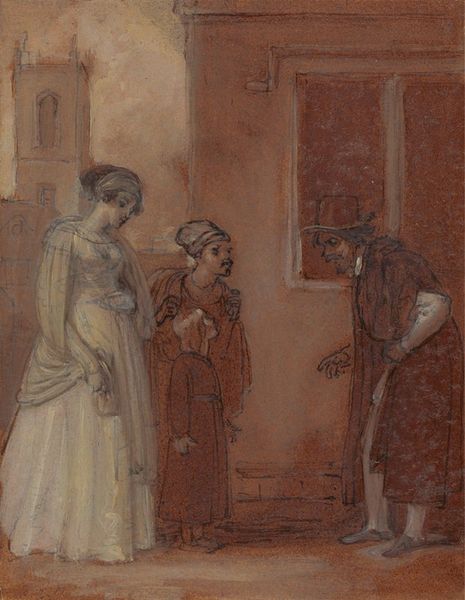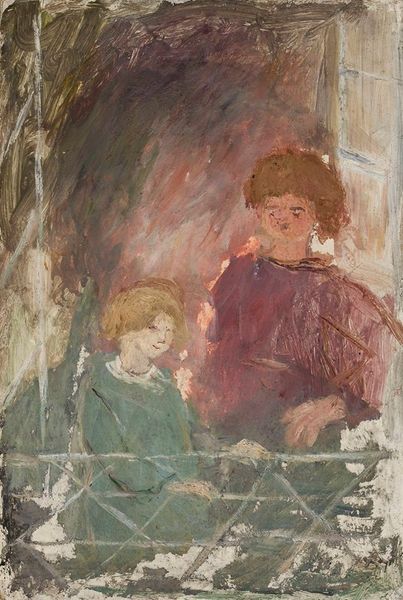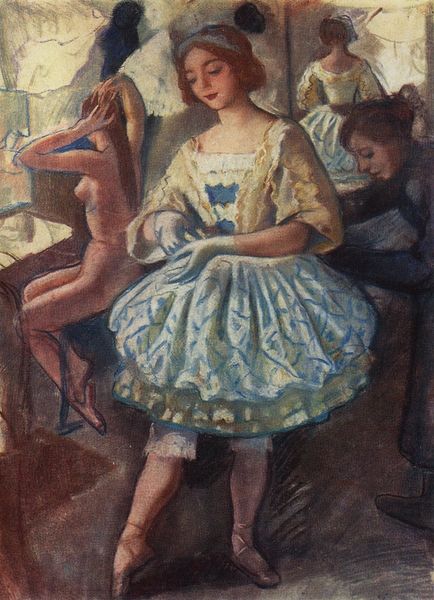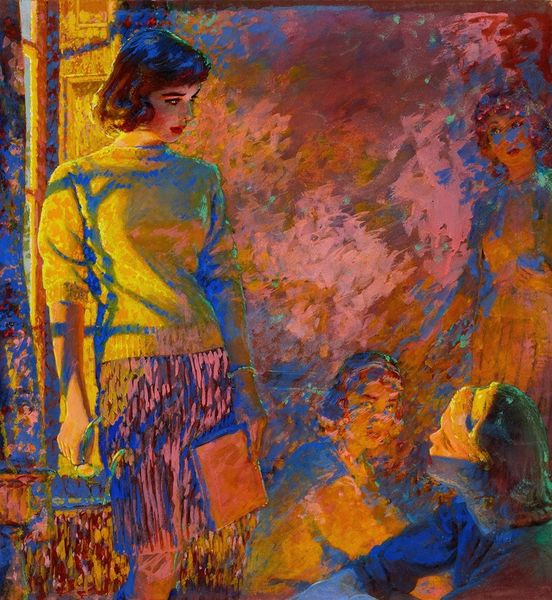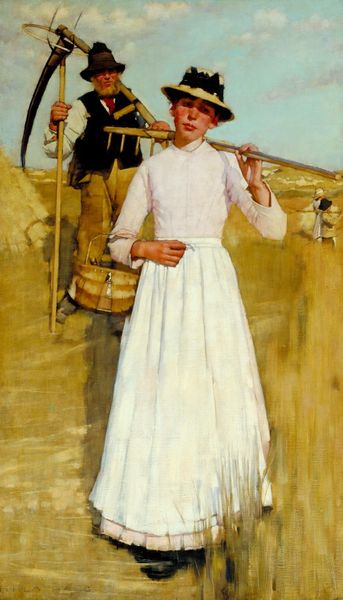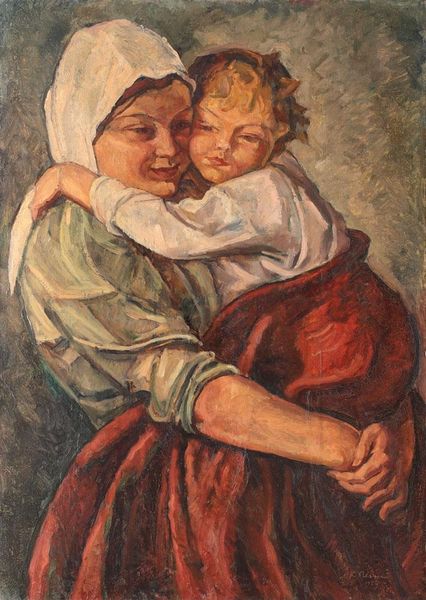
Copyright: Public domain US
Editor: This is Augustus John’s "Gypsy in the Sandpit," painted in 1912, using oil paints. It feels…intimate, almost like a glimpse into a private moment, but there is also an undeniable formality. What do you see in this piece? Curator: What immediately strikes me is the manipulation of colour. Observe the earthy yellows and browns that dominate, creating a warm tonality. Then, John introduces cooler hues in the figures' garments – the blues and greens – thereby creating a formal and chromatic tension. Consider the rough, visible brushstrokes; they suggest immediacy, yet the composition itself is carefully arranged. Does the application of paint inform your perception? Editor: Absolutely. The brushstrokes do give it an unfinished feel. And now that you mention it, the limited palette is very effective. What’s the impact of the figures' positions relative to each other and their relationship to the foreground and background? Curator: A brilliant question! The figures exist within an ambiguous spatial relationship, flattening of perspective to heighten visual tension. They’re occupying a foreground defined by texture, a "sandpit," and in their placement we find contrast. Notice also how John uses colour and texture not for illusionism, but to draw the viewer's attention to the act of painting itself. It transcends pure representation. The real subject here is the act of seeing, no? Editor: It does give you a lot to consider; seeing the composition, colours, and brushstrokes as separate elements makes you understand the overall design so much better. Thank you for pointing this out. Curator: My pleasure! It is by studying and examining the internal grammar and lexicon of visual language that we move closer to grasping an artwork’s very essence.
Comments
No comments
Be the first to comment and join the conversation on the ultimate creative platform.
